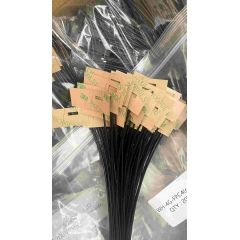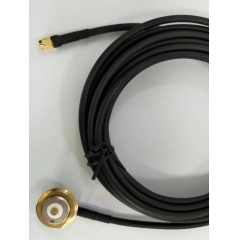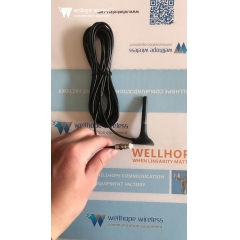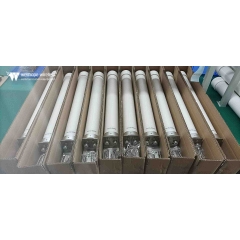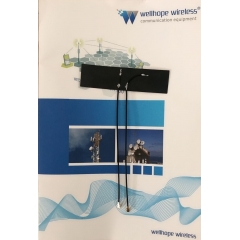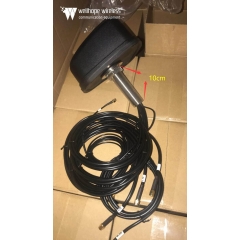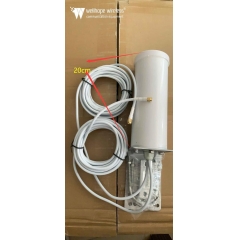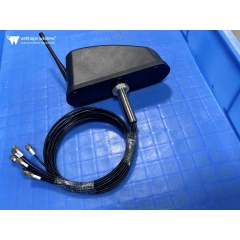How to systematically implement advanced antenna architecture for LTE wireless devices
Expect to finish reading in 13 minutes
With the substantial improvement of its connection reliability and transmission speed, LTE is rapidly developing all over the world. According to data from the Global Mobile Suppliers Association (GSA), more than 318 LTE networks have been put into commercial use in 111 countries and regions.
There is a commonality in all of these LTE networks that have been commercialized and are being planned. They also need to realize the multiple input and multiple output (MIMO) requirements of LTE. These MIMO requirements will extend to base stations and terminal equipment. In the case of terminal equipment, there are several reasons that make MIMO a challenge, including the need for multiple antennas, the trend of continuous thinning, unprecedented frequency band separation, operator preference for low frequencies, and lack of experience in RF design.

3G requires only one antenna, while MIMO technology requires at least two antennas. The number of antennas will increase as MIMO is designed to be 4×4 and 8×8. With multiple LTE antennas (including 3G/2G backup antennas, GPS, Wi-Fi, Bluetooth, and NFC), finding space becomes more difficult. The high-end MIMO design conflicts with thinner and lighter devices.
As devices become thinner and lighter, the internal space of smartphones and tablets is declining at a rate of 25% per year. The display screen and battery received the highest priority, while components such as the processor, memory, antenna system, and other components could only compete for the remaining space. On the one hand, there is a trend toward thinner; on the other hand, MIMO and low frequency bands (such as 700MHz) require a larger physical size antenna configuration. To meet these two needs at the same time, this gives original equipment manufacturers (OEMs) and their The design team brings pressure that cannot be ignored.
LTE operates in more than 40 frequency bands, covering from 450MHz to 2.7GHz, about half of which have been used in existing equipment. Establishing LTE global roaming for smartphones or tablets requires at least 40 frequency bands to be supported. In areas not covered by LTE, it is downgraded to the corresponding 3G standard. In these frequency bands, even in any small subset of frequency bands, it is challenging to find antenna space for the necessary 2×2 or more MIMO, plus antennas such as Wi-Fi and other technologies. It becomes even more difficult at times.
Operators are always eager for lower capital expenditure (CapEx) and operating cost (OpEx), so low frequency bands become their best choice. The general experience is that lower frequency and lower density base stations will bring better revenue to operators. Lower frequency bands can also provide better indoor coverage, such as 700MHz. This frequency band can also meet the needs of the rapidly growing "Internet of Things" (IoT) market and provide a good wireless network, which also guarantees user satisfaction. The essential. Operators are currently paying attention to the future use mechanism of the 600MHz frequency band. However, lower frequency bands also require larger physical antennas, which makes OEMs and their RF suppliers more creative when placing antennas in their thinner and lighter smartphones. IoT devices also have antenna space limitations.
As the penetration rate of LTE technology rises, so does the pressure when equipment suppliers add LTE to their products. Simply following the learning curve of new technologies is enough to challenge experienced smartphone vendors. For many suppliers who have little or no experience in M2M and IoT, there are more challenges in embedding cellular technology in their products.
OEM manufacturers and their RF suppliers not only have to deal with these challenges, but more importantly, use innovative solutions to work more effectively while gaining advantages in market differentiation.
Active antennas and RF solutions: for better flexibility, reliability and performance
Active antenna systems can help OEMs and their RF suppliers work more efficiently. Compared with traditional passive antennas, active systems provide greater flexibility in design and performance. In fact, active antennas are the easiest way to adapt to LTE's frequency band separation and MIMO requirements. It not only satisfies operators' preference for low frequencies, but also helps to fit thinner and thinner devices.
A single active antenna can cover two or more LTE frequency bands, even those that are far apart, such as frequency band 17 (704MHz to 746MHz) and frequency band 41 (2496MHz to 2690MHz). Single-feed antennas have been developed to cover all LTE frequency bands ranging from 698MHz to 2700MHz. This flexibility allows more operators to develop LTE-Advanced, which means carrier aggregation. When the separated frequency bands become farther away, LTE-Advanced becomes more challenging. System designers are increasingly choosing active antenna systems to meet this challenge.

Active antenna systems give OEMs new choices to achieve reliability and performance that end users are concerned about, such as voice, video, and data transmission, as well as 3G and 4G. Unlike passive antennas, active antenna systems can automatically repeat tuning and compensate for detuning effects caused by the user's head and hands. This means that smart phones and tablet devices can better provide fast uplink and downlink connectivity when using active antennas, and there are fewer dropped calls. Good reliability and performance benefit the brands of OEM manufacturers. In the case of smartphones, operators also hope to benefit from both brand reputation and operating costs, so that their customer service will receive fewer complaints.
Active antenna systems can also enhance the competitive advantage of OEM manufacturers. For example, in the design phase of a new product, including changes in the layout of the motherboard, or equipment with special requirements (such as shape and performance adjustments), the active antenna system can be dynamically adjusted to adapt to these changing environmental conditions. This will effectively reduce the cost of new products and advance their delivery cycle. OEM manufacturers can minimize their product model, because the flexibility of the active system means that it can adapt to the frequency band of each country or user.
Define the ideal active solution
Since active antenna systems provide many advantages for LTE MIMO applications, it is not surprising that so many RF suppliers are actively developing active debugging solutions. More and more choices also have their own challenges: first determine the solution, which will be more effective than first determining other things such as performance, reliability, flexibility, and ease of integration.
The key to successful implementation lies in a systematic scheme. This solution needs to achieve the best performance as a complete solution through the synchronous design and optimization of antennas, active devices and algorithms. This method not only provides equipment suppliers with an easy-to-integrate solution, but also helps their products get to market as quickly as possible and at the lowest cost. Other solutions require multiple steps to achieve. First, the equipment supplier needs to obtain the antenna and chip separately, and these components cannot work together optimally. Secondly, equipment suppliers must integrate various devices, optimize software, integrate various items into the equipment and hope that they can all work. This approach will be very time-consuming and expensive, and will also extend the learning curve. At the same time, for those chip suppliers who lack antenna expertise and most antenna companies without active device experience, this solution may also be difficult to obtain support.
The ideal solution is that an integrated module can effectively save costs and be quickly added to smart phones, tablets and other wireless devices, rather than spending weeks or months. This plug-and-play design reduces the R&D cost and time to market for OEM manufacturers, and at the same time they don't have to hire a radio frequency team to handle the corresponding work. The advantages of the latter are especially suitable for engineers who have only limited or no RF experience in M2M and IoT devices.
One solution is active impedance matching. This technology can reduce the physical size of the antenna by 50% without affecting performance. This significant reduction in size is very meaningful, especially when the battery volume continues to grow and additional antennas need to be integrated into the device. In addition, this technology can be used to cover a wider frequency band with the same antenna volume.
Ideally, active impedance matching should be done at the feedpoint rather than far away from the entire system, such as in the transceiver chipset. The design at the feed point will maximize performance, because debugging is to focus on the entire antenna system. When debugging is placed far from the back end of the RF link, the system performance will adversely affect the electrical delay and loss of the transmission line.
Band switching is another important way. Also known as active aperture (activeaperture), this technology can dynamically change the electrical length of the antenna element to change its frequency response. An alternative method has been discussed in the previous active matching, which is to change the impedance of the antenna on the debug circuit at the feed point. The main difference between the two methods is that the active aperture/band switch is used to coarsely adjust the antenna element while automatically matching the feed point to provide a more optimized frequency response.
In the past, OEMs had to choose between the two technologies because of the cost issues caused by multiple components (such as adjustable capacitors and switches). However, the new active device eliminates those trade-offs and instead combines a four-port switch and an adjustable capacitor in a single radio frequency integrated circuit (RFIC). This design uses the band switch to adjust the frequency domain of several hundred MHz, and uses the adjustable matching function to fine-tune the impedance. The biggest antenna challenge in LTE technology appears below 1 GHz, because this frequency band is most sensitive to antenna size. Active antenna system technology will focus on tuning these lower LTE frequency bands. Higher frequency performance is relatively easy to achieve even without active adjustment when optimizing the size of these high frequency built-in antennas. Therefore, it will pay more attention to low-frequency impedance matching and provide a more effective solution.
Chip suppliers usually design a radio frequency integrated circuit (RFIC) to cover as many frequency bands as possible, adapt to as many antenna types and match as much impedance as possible. Therefore, the design requires a trade-off between performance and cost. But suppliers with a lot of antenna experience know that tunable components cannot independently compensate for a poor antenna design. At the same time, an experienced active antenna system supplier also knows that in order to achieve the best performance and the lowest cost, it is equally important to design an antenna and its coordination circuit.
With the gradual popularity of LTE, active antenna solutions will become a necessary solution to meet the MIMO technical challenges of LTE, and at the same time help OEMs stand out from the competition and manufacture higher-performance devices.
www.whwireless.com


















 4G LORA
4G LORA
